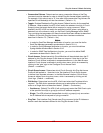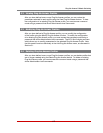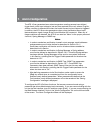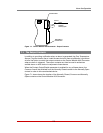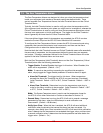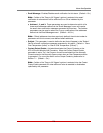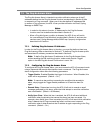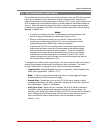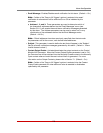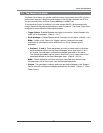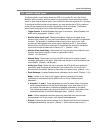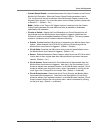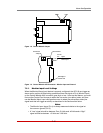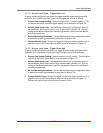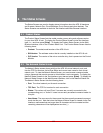
7-7
Alarm Configuration
7.4. The Invalid Access Lockout Alarm
The Invalid Access Lockout Alarm can provide notification when the AFS-16 has locked
a port due to repeated, invalid attempts to access command mode. Normally, the
Invalid Access Lockout feature (discussed in Section 5.3.2) will lock a port whenever the
AFS-16 detects that a user-defined number of invalid passwords have been entered at
the port. When the Invalid Access Lockout Alarm is properly configured and enabled
as described in this section, the AFS-16 can also provide notification via Email, Syslog
Message or SNMP Trap.
Notes:
• Inorderforthisalarmtofunction,InvalidAccessLockoutparametersmust
firstbeconfiguredandenabledasdescribedinSection5.3.2.
• WhenanInvalidAccessLockoutoccurs,theAFS-16canstilllockthe
networkportasdescribedinSection5.3.2,andcanalsosendanemail,
SyslogMessageand/orSNMPtrapifproperlyconfigured.
• Ifdesired,theAFS-16canbeconfiguredtocountInvalidAccessattempts
andprovidenotificationwhenthecounterexceedsauserdefinedtrigger
level,withoutactuallylockingtheportinquestion.Todothis,enablethe
InvalidAccessLockoutAlarmasdescribedhere,butwhenyouconfigure
InvalidAccessLockoutparametersasdescribedinSection5.3.2,setthe
LockoutAttemptsandLockoutDurationasyouwouldnormally,andthenset
the"LockoutEnable"parameterto"Off."
To configure the Invalid Access Lockout Alarm, you must access the AFS-16 command
mode using a password that permits Administrator Level commands. The Invalid
Access Lockout alarm configuration menu offers the following parameters:
• TriggerEnable: Enables/Disables the trigger for this alarm. When Disabled, this
alarm will be suppressed. (Default = On.)
Note:Tocancelanalarmwithoutunlockingtheport,simplytoggletheTrigger
EnableparameterOffandthenbackOnagain.
• ResendDelay: Determines how long the AFS-16 will wait to resend an email
message generated by this alarm, when the initial attempt to send the notification
was unsuccessful. (Default = 60 Minutes.)
• NotifyUponClear: When this item is enabled, the AFS-16 will send additional
notification when the situation that caused the alarm has been corrected. For
example, when Notify Upon Clear is enabled, the AFS-16 will send initial notification
when it detects that an Invalid Access Lockout has occurred, and then send a
second notification when it determines that the port has been unlocked.
(Default = On.)



